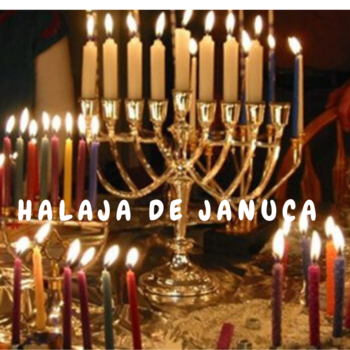Bein ha Metzarim
En el calendario hebreo encontramos un periodo de tiempo de 3 semanas que solemos llamar Bein HaMetzarim,
Que podríamos traducir como «entre las penurias»;
Esas tres semanas están próximas a llegar… Esto sucede entre el 17 de Tamuz al 9 de Av;
Durante estas tres semanas de angustia, nuestro pueblo, nuevamente llega a una fase de angustia, por el dolor que causó por la destrucción del Templo
Y de esas tres semanas, los días 17 de Tamuz y el 9 de Av son los más tristes en el calendario hebreo,
POr que?
porque precisamente, recuerdan la destrucción del Bet haMikdash, los dos Templos, el mismo día.
Con el paso del tiempo, nuevas tragedias se han ido añadido a la lista, por lo cual, estos días están relacionados con momentos de angustia y dolor.
«Por estas cosas lloro. Mis ojos, mi flujo de los ojos de lágrimas «,
Asi dice el verso de Meguilat Eija, que es la Meguilá de las Lamentaciones.
Y es tan grande la tristeza del pueblo de Israel al ver la destrucción de Yerushalayim que algunos midrashim llegan a describir escenas de dolor en las esferas celestiales.
La nación judía en el exilio desde entonces se ha visto abrumada por los ríos de lágrimas que fluyen, especialmente el 9 de Av,
Sin embargo…
sin embargo, la memoria de este trágico episodio mantiene la firme esperanza de retorno con vida.
Las Lamentaciones que se leen en Tishá Be Av, generan la pregunta:
«¿Cómo es posible?»,
Pero, a la vez también permite reafirmar nuestra esperanza del retorno y la renovación,
Hablando de esperanza
Ella, fue la que que permitió una unión específica del pueblo a lo largo y ancho de todos los momentos de dispersión, permitiéndole desarrollar un modelo de existencia en la que no se requería un templo como el centro de la vida comunitaria, sino que se centra en el estudio, la oración, y la la práctica de la acción correcta.
Fue en estos tiempos donde santuarios portátiles podían ser movidos alrededor en tiempo y espacio que el pueblo de Israel tuvo que vivir desde hace más de dos mil años hasta nuestros días, cuando la perspectiva de retorno comenzó a cristalizar, convirtiendo el sueño en una realidad concreta.
Tishá Be Av tanto, no es sólo un tiempo para llorar sobre la destrucción, sino también para contemplar la capacidad de nuestra nación para mantener su cohesión a pesar de la dispersión y de la reorganización a fin de preservar su esencia en la cara de la adversidad.
Esperamos que podamos convertir estos días de reflexión y tristeza en momentos importantes que nos permita reflexionar sobre nuestra capacidad para superar las dificultades y responder creativamente a la destrucción, ya que la actitud no debe ser »
¿Por qué?» ya que esto no tiene respuesta. Lo que debemos hacernos es «¿Entonces qué?».
¿Qué debemos y podemos hacer a raíz de esta experiencia?
¿Seguiremos siendo las mismas personas que antes? Y es por ello que estos días existen, poco tiempo antes del Mes de Elul, o de reflexión, el cual nos va a servir para poder recibir la bendición de un nuevo año.
English version
In the Hebrew calendar, there is a period of 3 weeks that we call Bein HaMetzarim,
which translates as «among the hardships» they are close to us …
When?
This happens between 17 Tamuz and 9 Av, during these three weeks of anguish, our people will again come to a stage of distress, pain caused by the destruction of the Temple,
and of those three weeks, on 17 Tamuz and 9 Av are the saddest in the Hebrew calendar, because precisely recall the destruction of the Bet Hamikdash, the two Temples, the same day.
Over time, new tragedies have been added to the list, which, these days are related to moments of anguish and pain.
«For these things, I weep. My eyes, my eyes flow with tears,» says Eija Megillah verse,
which is the Megillah of Lamentations.
sadness
And such is the sadness of the people of Israel to see the destruction of Yerushalayim that some midrashim come to describe scenes of pain in the heavenly spheres.
The Jewish nation in exile since then has been overwhelmed by the rivers of tears that flow, especially on 9 Av,
however,
However, the memory of this tragic episode remains the firm hope of returning alive.
Lamentations is read on Tisha B’Av, generates the question:
«How is that possible?»
But, at the same time also to reaffirm our hope for the return and renewal, hope that allowed specific binding of the people along and width of every moment of dispersal, allowing you to develop a model of existence that did not require a temple as the center of community life, but focuses on the study, prayer, and practice of right action.
It was in these times where portable shrines could be moved around in time and space that the people of Israel had to live for more than two thousand years until today,
when the prospect of return began to crystallize, turning the dream into a reality.
Tisha B’Av
Tisha B’Av is therefore not only a time to mourn over the destruction, but also to see our nation’s ability to maintain cohesion despite the dispersal and reorganization in order to preserve its essence in the face of adversity.
Hopefully, we can turn these days of reflection and sadness at important moments that allow us to reflect on our ability to overcome difficulties and respond creatively to destruction, and that attitude should not be «Why?» as this has no answer.
What we ask is «So what?».
What should and can do as a result of this experience?
Will we still the same people as before?
And that is why these days there, shortly before the month of Elul, or reflection, which will serve us to receive the blessing of a new year.
Recopilado 13 de Sivan de 5772 – 13 de junio de 2012












